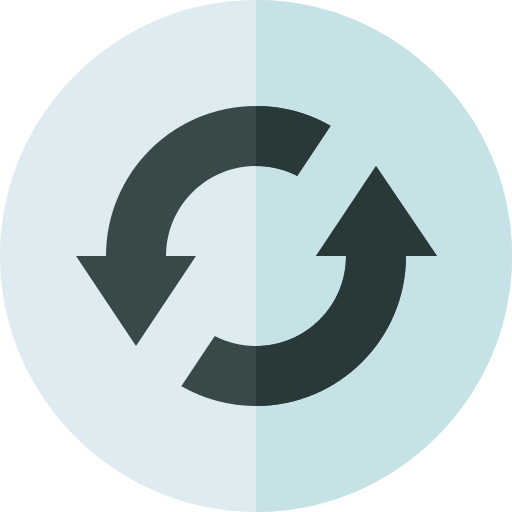Building Bridges: HR and Accounting's Journey to Successful Employee Benefits Management
Solid businesses are built on strategies and business plans, but excellent businesses are built by a strong and dedicated team. Investing in your employees and their overall satisfaction at work is the key to the steady growth of your business and your brand.
Employee benefits such as paid time off (PTO), bonuses, employee rewards programs, retirement plans, and many others are vital for companies to attract and keep top talents onboard.
Let’s see what is the typical bottleneck between HR and Accounting, and how can we overcome it to achieve a thriving workplace.
Challenges in HR and Accounting Communication
At first glance, HR and Accounting departments might appear to operate in unrelated spheres.
However, when it comes to managing employee benefits including health insurance, vacation days, or hosting training programs for upskilling the workforce, the financial aspect of the HR endeavors is crucial.
There are a few recurring challenges that keep appearing in the communication between these two departments, and they all come down to the margin of misunderstanding. This gap in understanding can be related to many reasons, including benefit policies, eligibility criteria, and deadlines.
Furthermore, if the HR and Accounting system do not synchronize data like employee profiles and compensation, benefit delivery can be late and result in disappointed or frustrated employees.
Finally, benefits management is subject to certain regulatory requirements such as tax laws and labor regulations, which require that both HR and Accounting are on the same page and up to date with regulatory compliance.
Strategies for Building Cross-Department Bridges
There are different ways to overcome the above challenges and improve the relationship between HR and Accounting. Here are some ideas you can adopt:
- Consider the interests of your employees first.
The common ground for a successful bridge is to make sure employee satisfaction is your main priority. That being said, consider the ways to support your employees beyond traditional benefits and ensure you work to prevent burnout, anxiety, and stress. - Incorporate regular meetings between departments.
One of the ways to improve communication is to actively work on fostering healthy conversations in the same room. Regular meetings and check-ins can be useful to address any concerns, discuss benefits, and stay up-to-date with any policy and regulation updates. - Standardize the workflow.
Create standards for operations and processes that concern employee benefits. This includes the eligibility, application, changes, and termination of the benefits through clearly documented procedures that enable smooth implementation. - Merge HR and Accounting platforms.
A way to prevent any misunderstanding and save time on back-and-forth communication is by HR and payroll software integration. An integrated software solution allows both departments to access and edit all relevant information and minimizes the chance of errors. - Create a position for cross-department communication.
Whether you wish to designate personnel from both departments that are in charge of the communication, or you appoint a single employee to be the contact point for both HR and Accounting, this position can smoothen coordination and speed up internal processes. - Design cross-functional employee training.
In order for all employees to gain a deeper understanding of what each department does and how it operates, you can host cross-functional training and ask them to participate. This activity can also help in building interpersonal relationships among employees and improve the overall workflow.
Improving the Recruitment Process
While a competitive salary is a factor most employers focus on, efficient job recruitment envisages a generous package of employee benefits. Many candidates will be interested in the following:
- Health insurance
- Paid time off
- Flexible working hours
- Remote/hybrid work option
- Retirement plans
- Career development opportunities
- Team building activities
Creating an efficient recruitment system means designing opportunities with tailored benefits to attract top talent, and aligning employer branding with employee-oriented company values.
The best candidates aren’t only interested in working for you right now, they also want to know if they have the ability to climb the ladder in the company and further develop their skill set.
The channel of communication and decisions made together by HR and Accounting can contribute to improving the recruitment process and creating a straightforward message to help the candidates set adequate expectations.
For example, when creating an offer for a new position, you need to understand what budget you can allocate for a new hire. Accounting can provide realistic insight into the budget that is available, and HR can develop the recruitment process using that information.
In terms of employee benefits that go with the job description, a flexible approach can be achieved with efficient collaboration between departments. In this case, accounting can ensure that the benefits are cost-effective and HR can adjust them to make the offer attractive to the target talent.
Moreover, by ensuring both departments have access to the recruitment CRM software, you can have an overview of the most promising candidates and work together on making things possible for them.
Suppose Joe, a potential expert you want to fill in the marketing manager position, expresses his wish for a six-hour workday. In that case, HR and Accounting can make an informed decision together by discussing the pros and cons based on the information they both have.
To Wrap Up
By shifting to the global market and tapping into the worldwide talent pool, certain rules have changed.
Nowadays, employees value companies that offer not only a competitive salary but also the opportunity to grow and space for practicing self-care. This shift in priorities is a direct result of the evolving nature of work and the changing needs and expectations of the workforce.
Whether you are an emerging startup or a successful business, setting the standard high for accommodating your employees can be very rewarding. Employee recognition can reflect positively on motivation, creativity, and productivity, thus inspiring your staff to be more involved in the company's progress and invest themselves in their jobs.
For employee benefits to take off and yield results, the collaboration of HR and Accounting is a must. Smooth implementation of benefits and living up to the promises you made during the recruitment process encourage employee engagement and contribute to the overall happy workplace.



